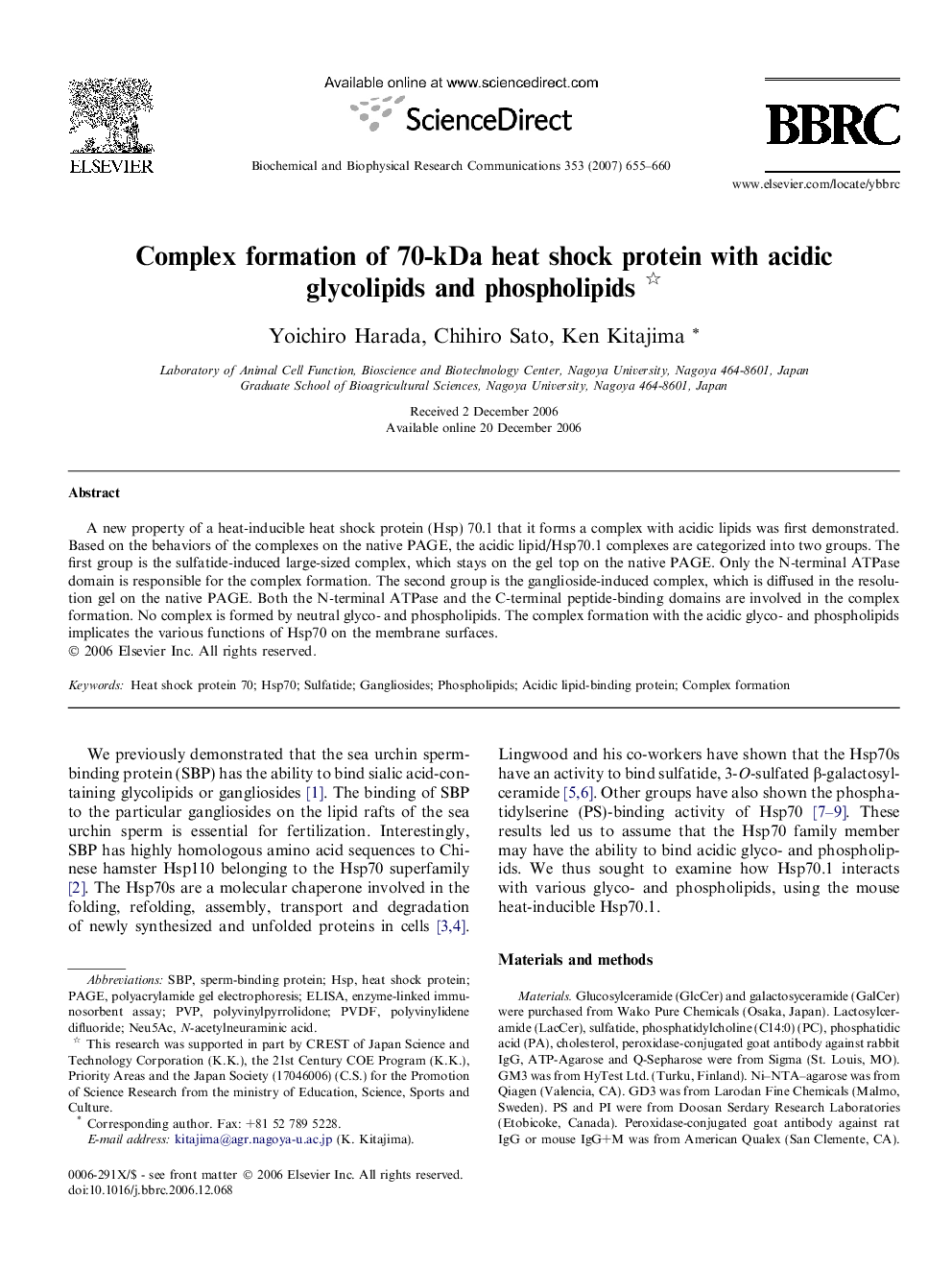| Article ID | Journal | Published Year | Pages | File Type |
|---|---|---|---|---|
| 1937662 | Biochemical and Biophysical Research Communications | 2007 | 6 Pages |
A new property of a heat-inducible heat shock protein (Hsp) 70.1 that it forms a complex with acidic lipids was first demonstrated. Based on the behaviors of the complexes on the native PAGE, the acidic lipid/Hsp70.1 complexes are categorized into two groups. The first group is the sulfatide-induced large-sized complex, which stays on the gel top on the native PAGE. Only the N-terminal ATPase domain is responsible for the complex formation. The second group is the ganglioside-induced complex, which is diffused in the resolution gel on the native PAGE. Both the N-terminal ATPase and the C-terminal peptide-binding domains are involved in the complex formation. No complex is formed by neutral glyco- and phospholipids. The complex formation with the acidic glyco- and phospholipids implicates the various functions of Hsp70 on the membrane surfaces.
